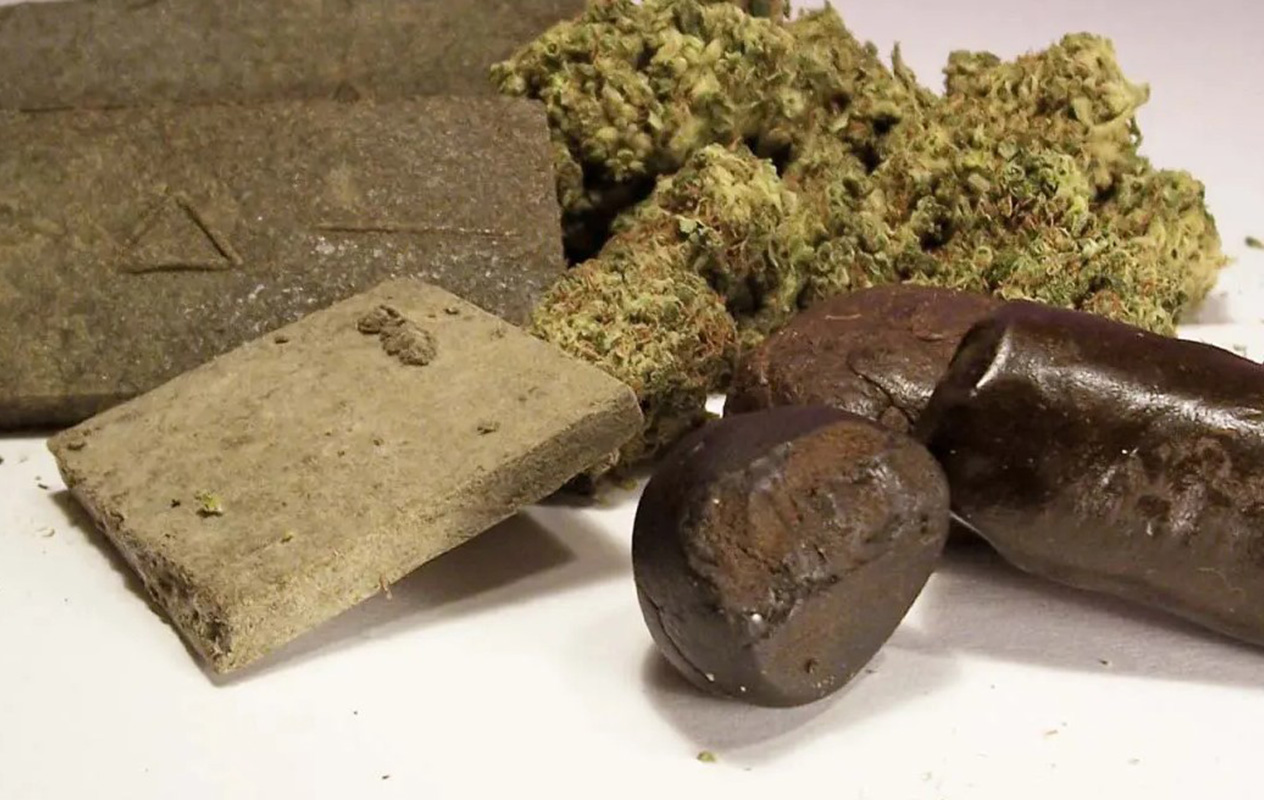Non classé
Best Type of Hash
It’s fascinating to watch the development of hash production over time, as humans have been producing it. Hacher has gone through a range of changes since its inception, culminating in fully industrialized carbon dioxide extraction. Despite very little change in how we utilize hash, a lot has occurred in terms of how we create it!
Hashish (or hash) is a blend of cannabis trichomes that have been removed and contain the psychoactive chemical THC, as well as over 100 other cannabinoids, including CBD, CBN, and CBG. Hash has been made in a variety of ways for hundreds of years by indigenous cannabis-growing communities in Morocco’s Rif Valley.
What is the best type of hash?

Today’s solvent hashish is the most pure and effective form available, with residual solvent traces being a significant problem in the past. However, working with flammable, combustible materials may be dangerous. As a result, making one’s own solvent extracts should only be attempted by persons who are knowledgeable about the dangers involved.
Water hashmaking, on the other hand, is a complicated procedure that comes with fewer hazards than solvent extraction. Water extracts are comparable to pure solvent extracts in quality, although lower grades may be less effective. Many cannabis users prefer water extracts to pure solvent extracts because they believe them to be “cleaner,” since they have not been exposed to any potentially harmful solvents.
Dry-sieve hash, on the other hand, is often preferred over extracts by those who want to maximize taste rather than strength. Dry-sieve and hand-rubbed hash are frequently bypassed in favor of extracts because they offer more flavor but less potency. While extracts are pure and powerful, the terpenes contained within the plant material are washed away, leaving a lack of flavor. The taste of the originating plant is frequently maintained due to increased dry-sieve and hand-rub hash content.
What is Hashish?
Hash is a cannabis-derived drug that’s produced from the resin of the plant. Resin is a sticky, viscous liquid that all kinds of plants produce, including tree sap. The cannabis plant’s resin is extracted and concentrated to create a potent form of marijuana for recreational use, typically in bricks or balls. Hash resin is crushed into bricks or balls of concentrated hash to make it burn easier. Because hash doesn’t burn easily on its own, it’s frequently combined with other plant material such as cannabis flowers or tobacco.
Hash has many chemicals in addition to cannabinoids like tetrahydrocannabinol (THC) and cannabidiol (CBD), as do all forms of cannabis.
However, hash that has been sifted, purified, and concentrated is more powerful than ordinary marijuana. To prevent unpleasant side effects such as drowsiness or hallucinations that might be overwhelming, such as paranoia, individuals frequently use a tiny dose at a time.
Hash, on the other hand, is more common in Europe and Asia. It’s impossible to say where hashish originated, but there are references to it from India and Egypt. Hashish was consumed prior to smoking becoming popular in the 1500s, which had a milder impact. Because of this, the active chemicals are less readily absorbed into the intestines and into the circulation system.
1. Dry-sieve hashish
Dry-sieving is another popular technique for extracting hash. Fully developed, harvested, and dried cannabis plants are shaken or rubbed over a fine-mesh screen to capture the powdery, crystalline resin as it drops from the plant. The size of the mesh determines the quality of the hash produced: a fine screen will create high-quality hash, whereas a screen with bigger gaps will create lower-quality hash with more plant material included in the mix.
In the dry-sieve method, the quantity and intensity of the ‘shake’ will also produce varied results. Good plants are shaken over a fine screen for one to two minutes to create high-quality dried-sieve hashish like as Double Zero, King Hassan, and Ketama Gold. This captures only the finest and most developed trichomes. Shaking for longer periods of time yields lower-quality hash with more plant matter.
2. Hand-rubbed hashish
Hand-rubbing is the second most popular technique of hash preparation after the dry-sieve procedure. This method is widely employed in India, Nepal, Afghanistan, and Pakistan as well as a number of lesser-known hash-producing countries such as Bhutan and Myanmar. Hand-rubbed hash has been popularized owing to international trade, and it is almost as widespread across national boundaries as dry-sieve.
The most common method of extracting resin from cannabis plants is to use this technique. Hashmakers will literally stretch out their arms and run through fields of mature cannabis plants, collecting the sticky resin on their skin before rolling it into balls and letting it “cure.” Charas (Indian hand-rubbed hash) may require several years of curing.
The quality of hand-rubbed hash is also affected by the plant’s quality, as well as by the attention paid to keep any plant parts out. The amount of time it takes to properly cure hashish is also crucial, not just for hand-rubbed hash but for any type made using a specific technique.
3. “Pure” cannabis extracts
The quality and potency of the resulting extracts have improved significantly as contemporary methods for extracting resin from cannabis have advanced. Now that the medicinal cannabis business has taken off in the United States and other countries, some of the licensed, regulated producers’ medicinal-grade hash is arguably among the finest cannabis products available today.
High-grade extracts are frequently produced using a solvent such as alcohol or butane gas, or simply ice-cold water. The belief is that crystals must be separated to generate hash in any method. A dry-sieve or hand-rub process will never produce the level of purity that a more precise type of mechanical or chemical extraction can provide.
The finished product is a liquid that can be used as desired. The crystals are removed from the remaining plant material and suspended in solution before being filtered through a fine mesh and dried with water or solvent extraction. Following that, they must be stored for weeks to ensure that any residual water or solvent have evaporated.
4. Water extraction or bubble hash

A set of progressively-smaller mesh-screen bags are placed one inside the other and immersed in a bucket or similar container, as is done when using water extraction. Fresh or dried plant material is put into a separate mesh bag with a larger screen size than any of the others (usually 220 microns or more).
The cannabis-containing bag is placed in a bucket or a specially-designed washing machine (Mila’s famous Pollinator®, Ice-o-lator® or Bubbleator®, for example), which is filled with ice water. The water is then stirred to create crystals that break off and are suspended in the solution as it freezes and hardens. The mixture is poured into the bagged bucket, where it passes through progressively smaller screens until the larger particles and residual plant material remain trapped.
The finest quality hashish is made using a stovetop method, which produces many different grades of hashish, with the smallest screen size (25-45 microns) generally being the best. The bigger screen sizes (90-220 microns) create lower-quality hashish with more plant material.
Solvent extraction
The crystals are extracted from the plant material using alcohol or butane gas. A screen is still required, although it is often a single screen size that is utilized, resulting in hash with uniform quality rather than the many grades achieved via water extraction.
The resin dissolves in the solvent and can be extracted when THC and other cannabinoids are soluble in alcohol and other solvents. For smaller amounts, a device like the HoneyBee may be used; for larger amounts, bespoke equipment is recommended.
A plastic cylinder with a tiny hole for a gas can nozzle at one end and a group of small holes in the other is used to make the HoneyBee. When pressurized gas is injected into the plastic cylinder, it expands and pushes the melted resin out through the openings, into a waiting container.
The isopropyl alcohol, quick-wash method has grown increasingly popular with the use of alcohol, and it’s frequently utilized in the US by medicinal manufacturers. Cannabis is combined with pure isopropyl alcohol for a little period of time here: a total of thirty seconds should be allowed to ensure that the outcomes are good. The mixture is then filtered through a screen after which it dries.
The cannabis industry has developed more sustainable and safe solvents to use in solvent extraction as technology advances. One such example is CO2 extraction, which is a popular technique among producers. This has become the standard method of extracting cannabinoids and other chemicals owing to the fact that the finished product contains no residual solvent.
6. Rosin
Rosin is a relatively recent development in the realm of hash. It’s quite basic: heat is used to melt the resin onto an absorbent material, and it hardens as a result. As the resin solidifies again, it pulls out of the absorbent material and sits on top of it.
A simple example is to use a hair straightener and parchment paper. A folded piece of parchment paper is used to enclose a dry cannabis flower. The parchment paper is then heated with a hair straightener until the resin melts into it. After removing the bud (ensure that the hair straightener is switched off), something resembling shatter or wax appears on the parchment paper. It may be scraped away.
This is an excellent example of a solvent-free cannabis extract. It’s safe, simple to produce at home, and extremely efficient and effective. Commercial producers in the United States are already employing this technique to make commercial quantities of rosin.


